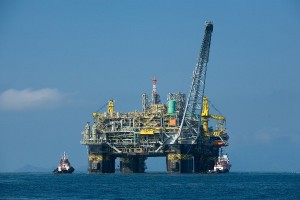 There is something about competing for a prize that drives people to do previously unthinkable things.
There is something about competing for a prize that drives people to do previously unthinkable things.
In 1927, Charles Lindbergh flew non-stop from New York City to Paris, securing his place in history and spurring an unprecedented interest in aviation. What is less known is that Lindbergh was chasing a prize, the Orteig Prize, created by New York hotel magnate Raymond Orteig in 1919.
Orteig’s challenge:
Gentlemen: As a stimulus to the courageous aviators, I desire to offer, through the auspices and regulations of the Aero Club of America, a prize of $25,000 [approximately $331,000 today] to the first aviator of any Allied Country crossing the Atlantic in one flight, from Paris to New York or New York to Paris, all other details in your care.
It was that simple: fly across the Atlantic Ocean from New York to Paris in one trip. No stipulations, no rules, just ‘go.’
 The only problem was that no one had done it before. Air travel was a new technology—the Wright brothers had only made their inaugural 12-second flight sixteen years earlier—and airplanes were seen as a dangerous fringe hobby, not a commercially viable form of transport.
The only problem was that no one had done it before. Air travel was a new technology—the Wright brothers had only made their inaugural 12-second flight sixteen years earlier—and airplanes were seen as a dangerous fringe hobby, not a commercially viable form of transport.
Lindbergh’s flight changed that. The incredible publicity surrounding Orteig’s challenge and the prize-winning flight helped to inform the citizenry and bring flight to the mainstream. By January 1929—less than two years after Lindbergh landed in Paris—the number of licensed aircraft had quadrupled, and airline passengers grew by almost 3,000%, from 5,782 to 173,405 (13,654 to foreign shores). “Suddenly everyone wanted to fly, and there weren’t enough planes to carry them”
Importantly, the Orteig Prize money was far less than what individual contestants spent on trying to win it. The XPRIZE—awarded for a vehicle that can transport people to space and back twice in two weeks—had a similar experience, with contestants spending over $100 million to chase a $10 million prize.
It is not as if these people are doing it just for the money; if that was the case, competitors would not be spending more on prototypes than the total value of the prize. It is something about the prize itself—people like challenges, especially if they get a trophy at the end.
 Enter Securing America’s Future Energy (SAFE), an organization that
Enter Securing America’s Future Energy (SAFE), an organization that
focuses exclusively on the unique challenges posed by the United States’ oil dependence.
SAFE has their own competition, the Energy Security Prize ($125,000 for first prize, $35,000 for first runner-up, and $15,000 for second runner-up), which is awarded to three emerging technologies not currently in the marketplace. These technologies must meaningfully reduce long-term U.S. oil dependence and must be deployable within five years.
Much has been written on how U.S. oil dependence weakens its security, constrains its foreign policy options, and contributes to its burgeoning trade deficit. While some argue that the U.S. should pursue a policy of oil ‘independence’ through increased domestic production, this line of reasoning fails to comprehend that oil is a fungible commodity traded in a global market. Even if the U.S. produced 100% of its own oil, it would still be vulnerable to global price shocks stemming from events in the Middle East.
SAFE recognizes this and realizes that the only way to increase our energy security is to reduce our total consumption of oil. If this prize can engender the same kind of furious interest as previous prizes of its kind, it could result in millions of dollars being spent on innovative technologies and a renewed public focus of what “energy security” really means.
Rory Johnston is a Master of Global Affairs (MGA) candidate at the University of Toronto’s Munk School of Global Affairs with a focus on energy markets and security.


